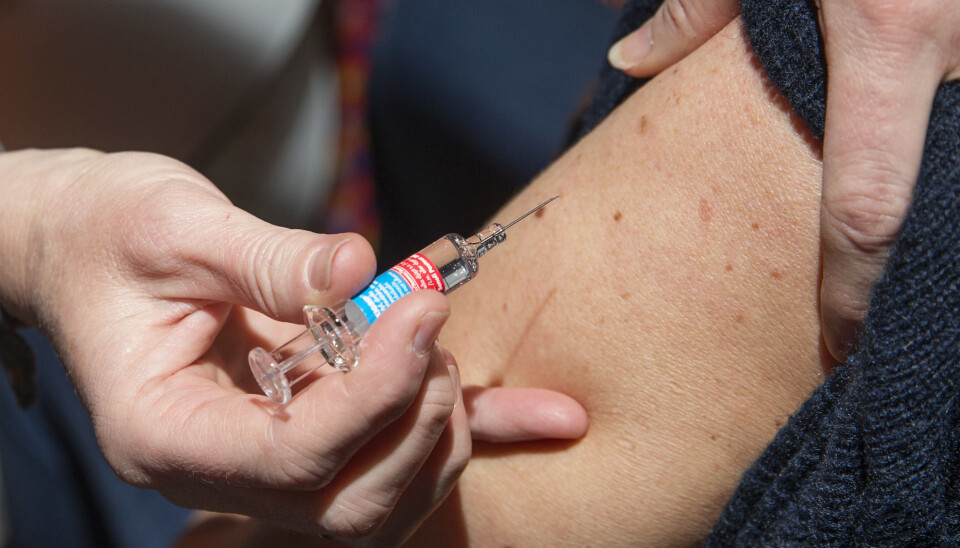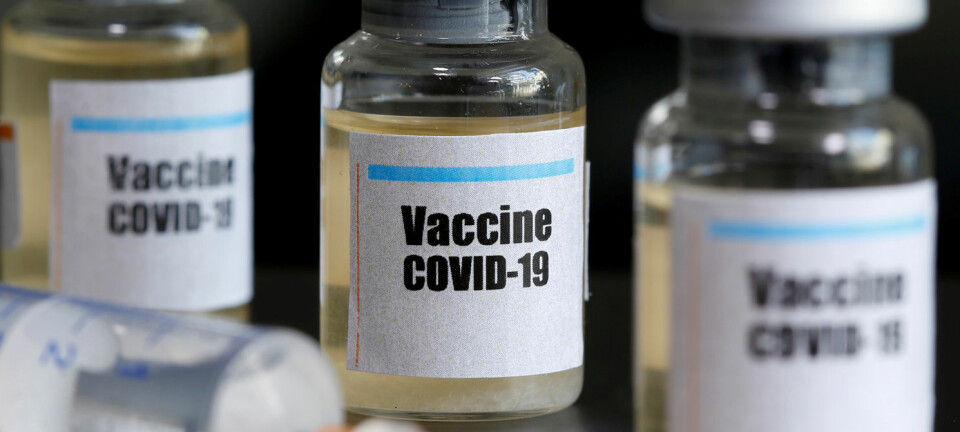
Should you get the flu vaccine this year?
The Norwegian Institute of Public Health fears that vulnerable people may be affected by both influenza and COVID-19. They have ordered more than usual of this year's flu vaccine.
There is currently no vaccine against COVID-19.
But the flu vaccine is coming, guaranteed. Norway’s health authorities would like lots of people to get the vaccine, and have ordered a larger number than usual this year - 1,2 million doses. Norway's population is 5,4 million.
Vaccine stocks may run out if a lot of Norwegians follow the call from the NIPH to get a flu shot. For people who aren’t in vulnerable groups, it may be first-come first-served when pharmacies start accepting orders in a few weeks.
Afraid of double infections
We have no idea how many people will be infected by the coronavirus this winter. It may be that Norway will see another serious wave of infection. Or perhaps the infection will stay at today's relatively low level.
«We are concerned about people in vulnerable groups getting both influenza and COVID-19,» says Siri Hauge, chief physician at FHI.
«A double infection like that can be an extra stress on the body,» she said.
If there is a big outbreak of both flu and COVID-19 simultaneously, the health services could also come under a great deal of pressure to provide care.
Norway has so far fared well during the pandemic, with low numbers of infections and deaths - 264 people have died of COVID-19 so far.
Related: Very low mortality rate from coronavirus in Norway compared to other countries
Strong decline in Australia
«The NIPH is following developments in the southern hemisphere, where it is now winter and flu season. For the time being, we don’t see much flu in circulation there,» Hauge said. «It seems probable that the measures to slow the spread of the coronavirus have also had an effect on the influenza virus.»
The online newspaper for the Australian General Practitioners Association reports a decrease of as much as 99 per cent in influenza this season compared to last year. Health experts believe this shows how dramatically infection control measures such as good hand hygiene, coughing into your armpit and people keeping their distance from each other can affect highly contagious diseases such as influenza.
But Australian experts warned in The New York Times that people shouldn’t expect the United States to be able to achieve equally good results.
Vaccine to 22 per cent
The NIPH’s Hauge says that the figures for vaccination coverage in Norway last season are not ready yet. But before the 2018/2019 season, 16 per cent of the population got a flu shot. This was an increase from 12 per cent in the previous winter (2017/2018).
This year, FHI has purchased enough flu vaccine so that mostly everyone who is considered to be in a risk group can be vaccinated. The 1.2 million vaccine doses they purchased correspond to enough vaccine for 22 per cent of the Norwegian population.
«We have bought everything we could get on the market. We are very uncertain whether we can get more,» Hauge said.
She says there are now 200,000 doses left. The rest have been pre-ordered by the municipalities with vulnerable groups in mind.
At the Vitusapotek chain of 270 pharmacies across the country, sciencenorway.no has been told that the company expects to have flu vaccines ready at the end of September or the beginning of October.
Vitusapotek says that they have also accounted for the possibility that demand for the vaccine will be increased for this flu season. Norsk Medisinaldepot, which owns Vitusapotek and Ditt Apotek, buys flu vaccines on its own. They supplement their supplies with vaccines from the NIPH if they are sold out and the NIPH has some left.
Around 900 die each year
The number of people who die due to the flu in Norway varies a great deal, but it’s estimated that an average of 900 people die from the illness every winter.
During the flu season of 2015/2016, around 6,000 people became so ill that they needed hospital treatment and as many as 1,700 people died, according to NTB, a Norwegian national news agency. Most were over 65 years old.
And during the winter of 2018/2019, more Norwegians than usual got seriously ill from the flu and more died. At least 2,500 people were hospitalized with severe flu that winter, according to the Norwegian national newspaper VG.
Last winter (2019/2020), the flu peaked at the end of February, after a season which at the time had been less severe than average in recent years. The comprehensive infection control measures against the coronavirus, which were introduced in March, led to a marked decrease in the number of influenza patients.
Related: How does the flu virus work, and why do we have to make new vaccines every year?
Reduces the risk of becoming seriously ill
In Norway, the flu season lasts from November to April, but it usually starts in earnest at the end of December and usually persists until mid-March.
The flu is caused by the influenza virus, which is not the same as a cold virus.
The disease is highly contagious and some people become seriously ill. These are usually older people, over the age of 65, and people with underlying diseases such as heart disease, lung disease, diabetes or weakened immune systems.
Pregnant women and people in assisted living residences and nursing homes are also considered to be in the risk group for influenza.
The flu vaccine doesn’t prevent the illness in everyone who gets it, but if you get sick, your risk of serious illness is reduced. The vaccine thus means fewer deaths.
The flu vaccine does not provide protection against the coronavirus.
Many people also already have immunity when the new flu virus arrives every winter. But a few times every century, the flu virus mutates, so its genetics change much more than usual. These genetic changes can lead to pandemics — such as the Spanish flu in 1918, the Asian flu in 1957, the Hong Kong flu in 1967 and the swine flu in 2009.
During the first three of these pandemics, millions of people died.
98 million doses in the United States
Norway is naturally not the only country where health authorities are afraid that people will get the influenza virus and the coronavirus at the same time. In the US, authorities are calling the risk a «twindemic».
Many countries are trying to buy flu vaccines now, and health authorities in a number of countries are trying to get as many people as possible to take the vaccine. In the United States, health authorities have stepped up the ordering of vaccine doses for people without health insurance, from the usual 500,000 doses to 9.3 million doses, according to The New York Times.
Vaccine manufacturers believe the US could set a record of 98 million doses of influenza vaccine this year.
In the UK, Prime Minister Boris Johnsen has launched the country's largest flu vaccine campaign ever and at the same time has called vaccine opponents «nuts».
Translated by: Nancy Bazilchuk
———

































